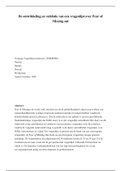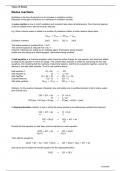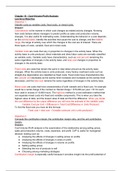acti vati on?
Antibodies produced by activated B cells bind specific epitopes on antigens so they are
capable of targeting a single microorganism while preventing collateral damage to healthy
tissues. Since virtually all microorganisms can trigger immune response, a large diversity of
antibodies is necessary for successful recognition and eradication of all potential pathogens.
The human antibody repertoire is at least 10 11, its origin is explained by two main theories –
the germline theory and the somatic diversification theory. This essay will provide a detailed
account of the diversification mechanisms that underlie these theories.
To begin with, it is worth understanding the structure and production of antibodies before
going onto discussing its diversification. Antibodies, or immunoglobulins, are Y-shaped
proteins composed of 2 identical light and 2 identical heavy chains, each having a variable
domain and a constant domain encoded by multiple gene segments on a chromosome. A
variable domain consists of 3 loops that comprise 3 hypervariable complementarity
determining regions (CDRs) that determine the specificity of the 2 antigen-binding sites. The
constant domain of heavy chains, on the other hand, specifies the isotype(s) of antibodies
produced. Identical antibodies are secreted by a single differentiated B cells so the
seemingly limitless diversity of antibodies must arise from many progenitor B cells with
different genes. As we discuss below, the first wave of antibody diversification occurs by
gene rearrangement as B cells develop in the bone marrow; later followed by somatic
hypermutation and class switching that occur in germinal centres of secondary lymphoid
tissues after B cells are activated.
V(D)J Recombination
Over the course of B cell development in the bone marrow, gene segments encoding for
parts of the variable domain are rearranged by V(D)J recombination to form a complete
variable-region gene, giving rise to combinatorial and junctional diversity. The enormous
diversity of antibodies challenged the previously believed “one gene one protein”
hypothesis since the limited size of the human genome with 10 5 genes is far less than the
genes necessary to encode billions of different antibodies. This contradiction was resolved
by the pioneering work of S. Tonegawa in the 1970s, when techniques of restriction enzyme
analysis showed that gene segments coding for the variable domain are redistributed as an
embryonic cell differentiates into a B cell, whereas in other cells these variable-region gene
segments remain in their original germline configuration and are far from the constant-
region genes on the same chromosome. To illustrate, the variable domain in light and heavy
chains are encoded by VL, JL and VH, DH, JH genes respectively. In unarranged DNA, these gene
segments are separated by introns, somatic recombination brings them together and
generate a complete variable-region exon, then post-transcriptional RNA splicing joins the
assembled variable-region sequence to the constant-region genes. This recombination
process leads to combinatorial diversity because there are multiple copies of V, D, J gene
segments in germline DNA, it is the random selection of just one gene segment of each type,
which gives rise to the great diversity of variable-region genes in each immunoglobulin chain
by mix-and-match. The transcription of D H gene in multiple reading frames also add to the
diversity. Furthermore, there are 3 sets of immunoglobulin chains – the heavy chain and 2
equivalent light chains, the κ and λ chains, again by mix-and-match, any of the 320 light
chains can be paired with any of the 6000 heavy chains to amplify the diversification






